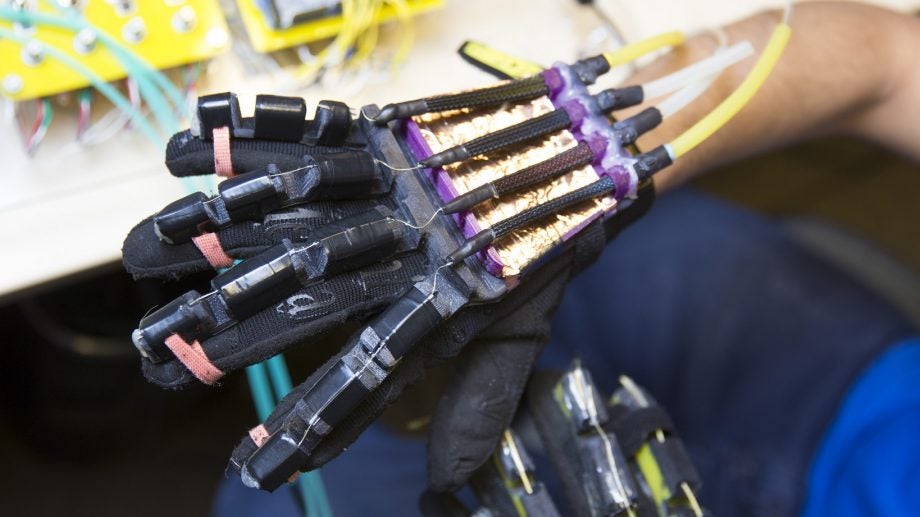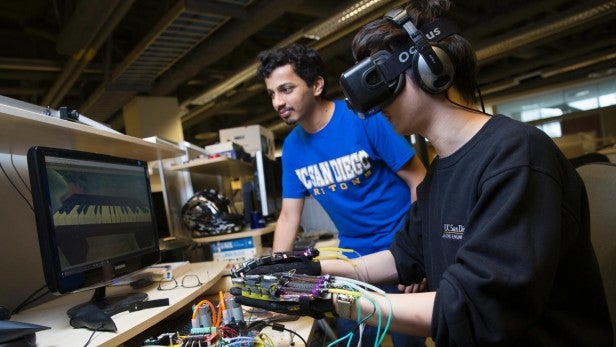These gloves let you ‘feel’ objects in virtual reality

Virtual Reality is expensive, but early adopters of the technology are willing to pay a high price for the immersion it brings.
Right now, the quality of the display technology in the likes of the Oculus Rift or HTC Vive is prioritised as the most effective way for a virtual world to swallow you up.
But a team from UC San Diego’s Jacobs School of Engineering are attempting to add an extra level of immersion with their latest innovation.
The team have created a light and flexible VR glove that uses ‘soft robotics’ technology to simulate the feeling of interacting with a physical object in a digital space.
A member of the group demonstrated the gloves by playing a virtual piano in VR, showing just one application for the tech which has the potential to radically enhance video games experiences and even help with surgery.
A key part of the ‘soft robotic’ component is what’s known as the McKibben muscle, which, in other words, is a set of latex chambers covered in braided fibres that respond to the finger movements of the user.
A Leap Motion sensor works out the movements of the users hands as the McKibben muscle deflates and inflates to mimic the forces the user would experience were they touching the virtual object in the real world.
Jurgen Schulze, in a presentation to a VR conference in Burlingham, California, explained how today’s tech falls short in recreating the sensation of physical feedback.
“They’re not realistic,” the Qualcomm Institute researcher said, referring to the current crop of tech that only consists of remote-like devices that vibrate when a user comes into contact with an object.
“You can’t touch anything,” he added, “or feel resistance when touching a button. By contrast, we are trying to make the user feel like they’re in the actual environment from a tactile point of view.”
The glove is going down well with VR testers already. Michael Tolley, a mechanical engineering professor at the Jacobs School said that “this is a first prototype but it is surprisingly effective”, as the team of engineers conducted a pilot study of 15 users. They said that it was “mesmerising” and “amazing”.

Now the first prototype build is complete, the team are looking at making the glove cheaper, less bulky, and more portable. Their long term goal is to “create a device that provides a richer experience in VR.”
We might be some distance away from it actually appearing on shelves, but VR enthusiasts will be buoyed by the fact the team have managed to 3D-print a mould to make the soft exoskeleton of the glove. This would help make the glove suitable for mass production.
If this tool can deliver on the promise it shows, by making touch feel as realistic as sight and motion tracking in VR, the immersion factor of virtual experiences will increase dramatically, revolutionising the way we work and play in the virtual space.
Let us know your thoughts on the glove in the comments.

